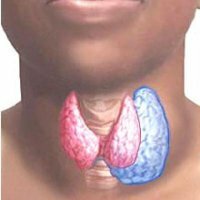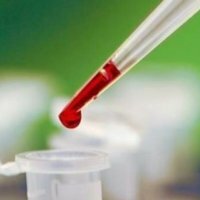Principles of treatment of diabetes mellitus
 Diabetes mellitus is a serious medical problem. In Europe, about 5% of people suffer from it, but it is difficult to talk about true indicators, because patients with type 2 diabetes do not always go for help. In the treatment of type 2 diabetes, special importance is associated with the prevention of complications, worsening of the cardiovascular system and peripheral nervous system. This article will tell you about the principles of treatment of diabetes, the definition of a number of drugs used for this purpose.
Diabetes mellitus is a serious medical problem. In Europe, about 5% of people suffer from it, but it is difficult to talk about true indicators, because patients with type 2 diabetes do not always go for help. In the treatment of type 2 diabetes, special importance is associated with the prevention of complications, worsening of the cardiovascular system and peripheral nervous system. This article will tell you about the principles of treatment of diabetes, the definition of a number of drugs used for this purpose.
Prevention and therapy
At the moment, diabetes has become a global epidemic, and the number of victims of this disease is increasing all the time. This disease is dangerous, mainly by its neurological and vascular complications - neuropathies and angiopathies.
Approximately 65-75% of people who suffer from type 2 diabetes die of cardiovascular disasters - acute deterioration of cerebral circulation and myocardial infarction. At the same time, there are quite effective ways of preventing and treating complications of the disease, the effectiveness of which is confirmed by serious clinical studies.
The main approaches to the prevention and treatment of complications of diabetes mellitus can be considered correction of hyperglycemia( high level of glucose in the human blood), arterial hypertension, as well as dyslipidemia( deterioration of fatty blood composition), improvement of rheological characteristics of blood( blood "dilution"),Which have organoprotective characteristics( contributing to the protection of internal parts)
This was told by a well-known scientist of our country, leading the department of prevention andecheniya diabetes Professor BN Mankovsky. According to the American Diabetes Association, as well as the European Association for the Study of Diabetes Mellitus, in order to effectively control diabetes mellitus and perform prevention of complications, it is necessary to strictly adhere to such recommendations. It is necessary to regularly calculate and change the level of creatinine( metabolic products in muscle tissues, the index of kidney work, the laboratory criterion for life-threatening conditions) in the blood and TSH( glucose tolerance test).It is best to determine the glucose level in the blood every day, and once in three months - the urn of glycosylated hemoglobin( to which glucose is attached).It is advisable to examine the fundus every day, and also to be examined for the presence of neuropathies and microalbuminuria( presence of albumin protein in the urine).
Treatment of diabetes
Type 2 diabetes is a constantly progressive disease with a tendency to a slow decline in pancreatic insulin production. Even in case of timely diagnosis of the disease, the patient has approximately 50% of the β-cells of the pancreas that produce insulin. Due to numerous studies it was possible to convincingly prove the possibility of a significant drop in the risk of diabetic complications due to the normalization of glycemia( blood glucose).To control glycemia in the disease of type 2 diabetes, use physical activity, diets and drugs of individual groups. Mostly, these are drugs taken inwards and reducing the glucose level in the blood. The main groups are biguanides( metformin), as well as sulfanyl-sulfonic compounds( glibenclamide).Therefore, in accordance with the consensus of the European Association for the Study of Diabetes Mellitus and the American Diabetes Association, it is advisable to follow the following principles for the treatment of type 2 diabetes.
In the first type of diabetes mellitus, the first type is prescribed for the first-line drug - metmorphine, which reduces blood glucose level, combining it with a lifestyle change( bringing the weight back to normal, physical activity).If therapy with one medicine does not help to achieve the desired glycemia, and the glycosylated hemoglobin index is above 7%, you need to add a preparation of sulfoniourea, or a drug that is part of the group of glitazones, or insulin. If the compensation of diabetes mellitus can not be achieved by these methods, it is necessary to use active insulin therapy both in its own form, and together with the glitazones or metformin.
The most effective is the basic bolus system of insulin therapy, when in the beginning take insulin for a long time, and the rest is injected throughout the day as insulin of short exposure.
The most significant moment in the prevention of complications of diabetes is blood pressure control .The presence of diabetes mellitus automatically treats the patient to a group of high risk, even in the case of a slight increase in pressure. The presence of diabetes in humans can be compared to the presence of 3 risk factors, for example, dyslipidemia( deterioration of fatty blood), obesity, smoking.
Proper antihypertensive treatment for diabetes mellitus helps to reduce mortality, reduce the likelihood of developing cardiovascular diseases, prevent progressive kidney damage at various stages of development of renal failure( nephropathy).
Antihypertensive( pressure-lowering) treatment should be performed much more aggressively, even for patients with a small amount of hypertension, which is necessary in order to achieve more low blood pressure, guarantee kidney protection. If possible, it is necessary to avoid prescribing drugs that impair the susceptibility of tissues to insulin, which adversely affects the fat metabolism and blood glucose.
First-line drugs include ACE inhibitors, as well as angiotensin receptor blockers for II , selective beta-blockers, calcium channel blockers, and minor doses of thiazide diuretics.



